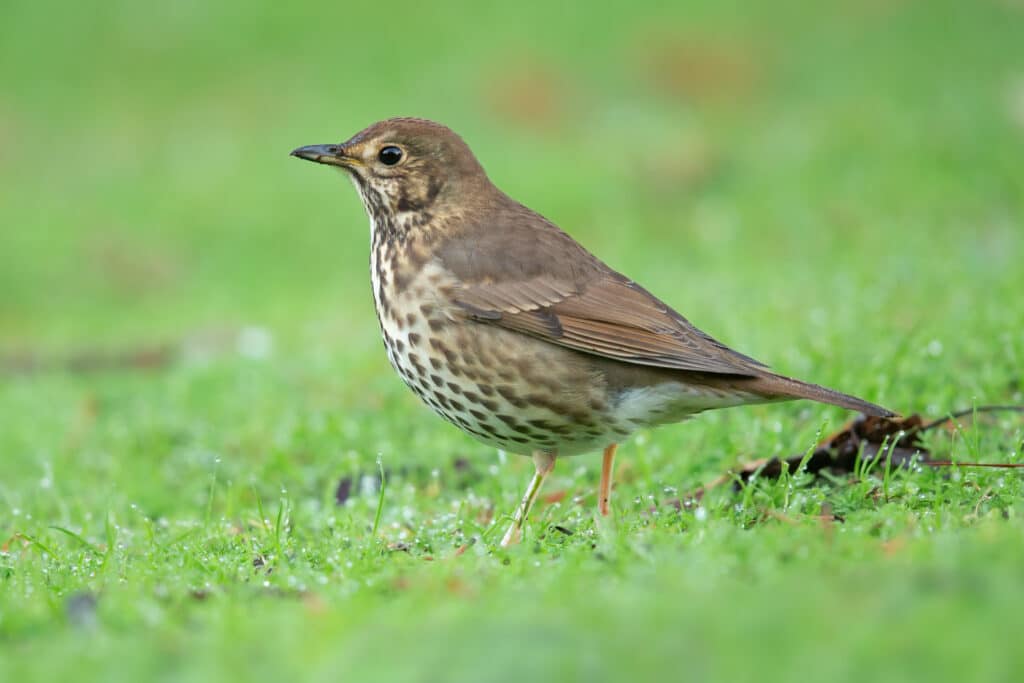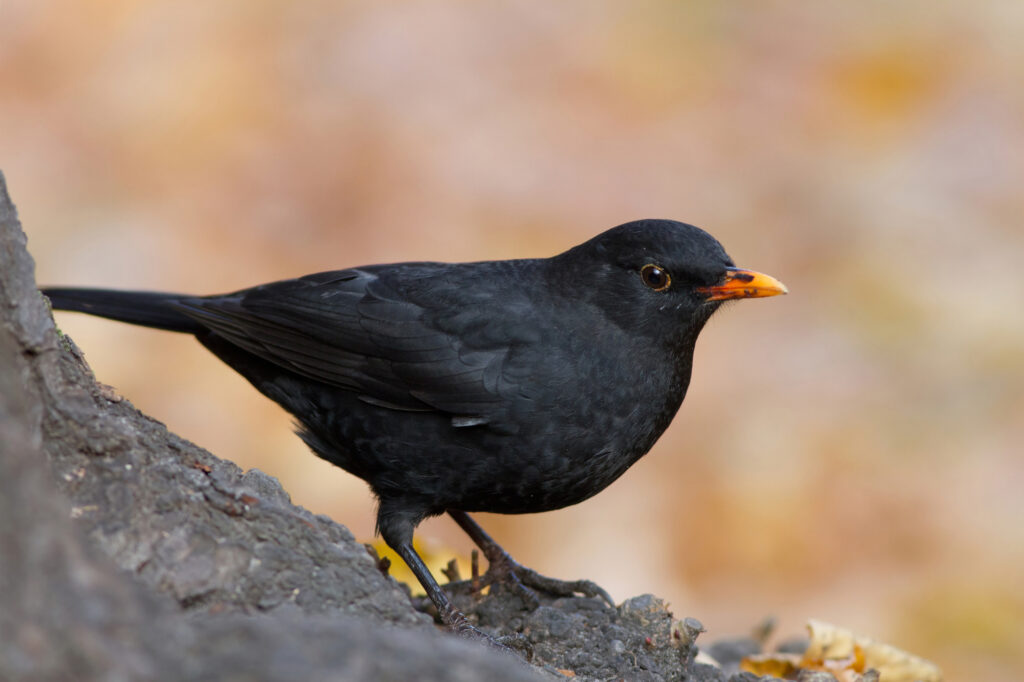Thrushes, belonging to the family Turdidae, are a diverse group of birds known for their melodious songs and stunning plumage. With over 180 species distributed across the globe, these avian wonders captivate bird enthusiasts and casual observers alike. In this article, we will delve into the fascinating world of thrushes, exploring their characteristics, behaviour, habitats, and the unique species that make up this diverse family.
Physical Characteristics
Thrushes exhibit a range of physical characteristics, but most share common features. They typically have plump bodies, rounded wings, and medium to long tails. Their beaks are usually slender and adapted to their specific dietary preferences. Thrushes vary in size, with some species measuring around 5 inches in length, while others can reach up to 12 inches. Their plumage showcases a beautiful array of colours, including shades of brown, grey, orange, and blue.

Range and Distribution
Thrushes have a global presence, inhabiting various regions across the world. They can be found in North America, Europe, Asia, Africa, and parts of Australia. Different species exhibit specific preferences for certain habitats, including forests, woodlands, scrublands, and gardens. Thrushes are particularly diverse and abundant in the Neotropical region of the Americas, where they occupy a range of ecological niches.
Habitat and Nesting Habits
Thrushes occupy diverse habitats, depending on their species and geographical location. They are adaptable birds, thriving in environments ranging from dense forests to urban areas. Forest-dwelling thrushes prefer understory vegetation, where they can find ample cover and forage for food. In contrast, some species, such as the American Robin, have successfully adapted to suburban gardens and parks.
When it comes to nesting, thrushes construct cup-shaped nests using a combination of twigs, leaves, grass, and mud. These nests are usually well-hidden in trees or shrubs to provide protection for their eggs and young. The location and structure of the nests vary among species, but they all serve the purpose of providing a safe and secure environment for breeding.
Diet and Feeding Behaviour
Thrushes have an omnivorous diet, feeding on a wide variety of food sources. Their primary diet consists of insects, earthworms, snails, and other invertebrates. They have a remarkable ability to detect and extract hidden prey from the ground and leaf litter using their sharp eyesight and probing beaks. However, they also consume fruits, berries, and seeds, particularly during the non-breeding season when insects may be scarce. Some thrush species have adapted to urban environments and can be seen foraging in gardens for food, taking advantage of the abundance of berries, fruits, and invertebrates found in such settings.
Vocalisations and Song
One of the most enchanting aspects of thrushes is their ability to produce beautiful songs. Each species has its own unique song, which is often used for territorial defence and courtship. Thrushes are known for their rich, flute-like melodies that resonate through their habitats. Their songs are often complex and consist of various notes and trills, showcasing their remarkable vocal abilities. Some thrush species, like the Nightingale, possess an exceptional range of vocalisations and can imitate the sounds of other bird species.
Migratory Patterns
Several thrush species undertake remarkable migratory journeys, travelling thousands of miles between their breeding and wintering grounds. These migratory patterns are influenced by seasonal changes, food availability, and breeding requirements. Thrushes navigate using celestial cues, magnetic fields, and landmarks to guide them on their long-distance journeys. In the Northern Hemisphere, many thrushes breed in the summer and migrate to warmer regions during the winter. They join the ranks of other migratory songbirds, such as warblers and flycatchers, as they embark on their arduous journeys.
Courtship and Breeding
During the breeding season, male thrushes engage in elaborate courtship displays to attract females. These displays can involve singing, wing-fluttering, and hopping movements to showcase their fitness and attract a mate. Once a pair bonds, they work together to build a nest and raise their offspring. Thrushes typically lay a clutch of 3-6 eggs, which are incubated by both parents. The incubation period varies among species but generally lasts for around 12-15 days. After hatching, the parents diligently feed their chicks and protect the nest from potential predators.
Parental Care
Thrush parents are diligent caregivers, tending to their eggs and nestlings with utmost care. Both males and females take turns incubating the eggs and providing food for their hungry chicks. The parents tirelessly search for insects and other small prey to feed their growing brood. As the chicks mature, they gradually fledge and learn essential survival skills from their parents. The parental care period can last for several weeks until the young thrushes are capable of independent living.
Threats and Conservation Status
Thrushes face various threats in the wild, including habitat loss, deforestation, pollution, climate change, and predation. These factors can disrupt their breeding and foraging habitats, leading to population declines. Additionally, some species are hunted for their appealing plumage, which has contributed to their decline in certain regions. Conservation efforts and habitat preservation are crucial to safeguarding thrush populations worldwide. Several thrush species, including the Chinese Thrush (Turdus mupinensis), are listed as endangered or vulnerable due to the loss of their forest habitats.
Interactions with Humans
Thrushes have long captured the fascination of humans, inspiring poets, musicians, and artists throughout history. Their beautiful songs and vibrant colours make them popular subjects for photography and artistic depictions. Thrushes also play an essential ecological role as seed dispersers, aiding in the regeneration of forests and maintaining biodiversity. Birdwatchers and nature enthusiasts often seek out thrushes in their natural habitats, appreciating their presence and contributing to their conservation through observation and advocacy.
Notable Thrush Species
The family Turdidae comprises numerous remarkable thrush species. Here are some notable examples:
- European Robin (Erithacus rubecula): Known for its red breast and friendly demeanour, the European Robin is a beloved symbol of winter and Christmas in many cultures.
- American Robin (Turdus migratorius): This iconic North American thrush is known for its orange breast and melodic song. It is considered a harbinger of spring in many regions.
- Song Thrush (Turdus philomelos): With its melodious and flute-like song, the Song Thrush is a common sight in European woodlands and gardens.
- Redwing (Turdus iliacus): The Redwing is a migratory thrush that breeds in northern Europe and winters in milder regions, often forming large flocks.
- Blue Whistling Thrush (Myophonus caeruleus): Found in parts of Asia, the Blue Whistling Thrush is renowned for its vibrant blue plumage and hauntingly beautiful song.
- Blackbird (Turdus merula): This thrush species is widespread in Europe and known for its jet-black feathers and melodious song.
Thrushes in Mythology and Folklore
Thrushes hold symbolic significance in various cultures around the world. In Greek mythology, the nightingale, a member of the thrush family, was associated with the power of music and poetry. In folklore, thrushes were believed to possess magical qualities and were often associated with good luck, love, and the arrival of spring. Their enchanting songs have been featured in numerous legends and stories, further emphasising their cultural significance.

Thrushes as Indicator Species
Thrushes, with their sensitivity to environmental changes, serve as important indicators of ecosystem health. Their presence or absence can provide valuable insights into the overall well-being of habitats. Monitoring thrush populations can aid conservationists in assessing the impact of human activities and implementing measures for habitat restoration. By understanding the population dynamics and behaviours of thrushes, scientists can gain valuable information about the health and sustainability of ecosystems.
Thrushes in the United Kingdom
The United Kingdom is home to several resident and migratory thrush species. Some of the common thrushes found in the UK include the Song Thrush, Blackbird, Mistle Thrush, and Redwing. These birds can be spotted in woodlands, gardens, parks, and even urban areas. Thrushes are welcomed visitors to UK gardens, where they feed on berries, insects, and worms. The decline in certain thrush populations, such as the Song Thrush, has been a cause for concern, highlighting the importance of conservation efforts to protect their habitats.

Conclusion
Thrushes, with their melodious songs and captivating beauty, have established themselves as beloved members of the avian world. Their diverse species, ranging from the familiar European Robin to the exotic Blue Whistling Thrush, offer a glimpse into the wonder and intricacies of nature. By understanding and appreciating these enchanting songbirds, we can contribute to their conservation and ensure their melodies continue to grace our natural landscapes for generations to come.
Sam loves to learn about animals and their habitats. He has been a nature lover from a very young age, and has been writing papers and articles about wildlife for as long as he can remember.
